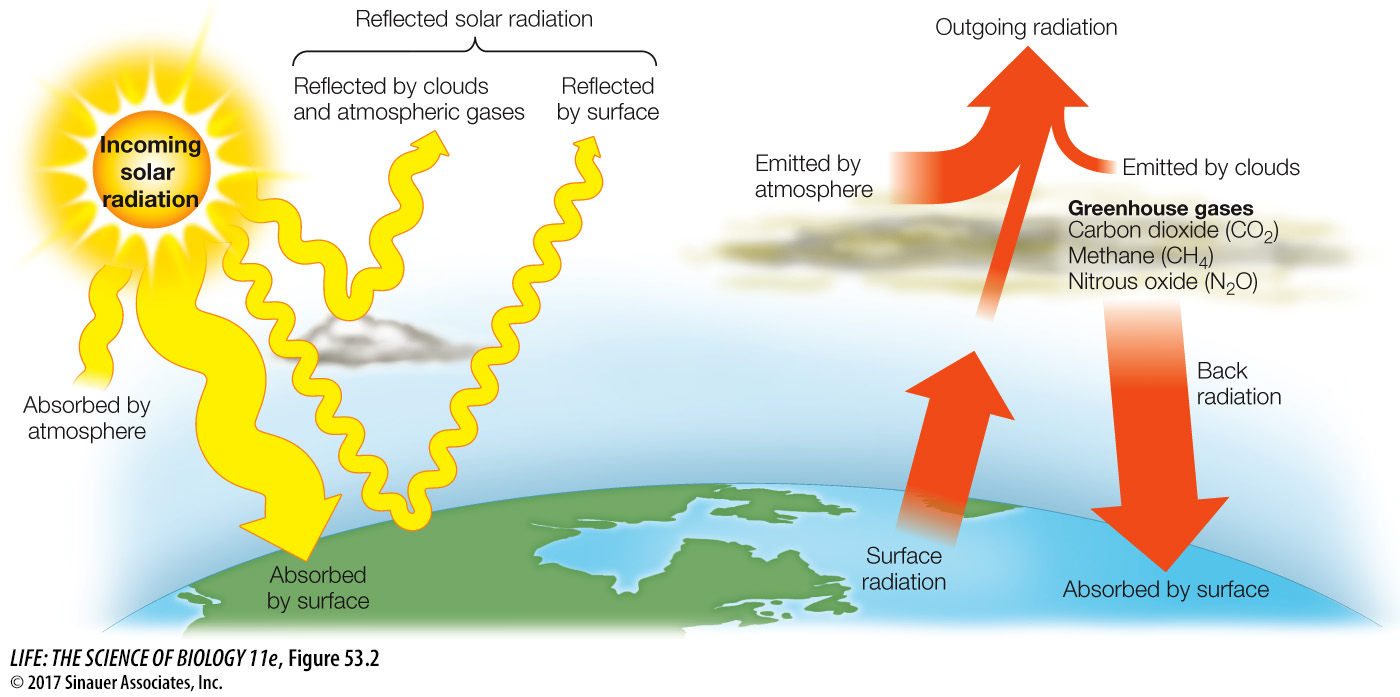Solar radiation drives global climate patterns
The energy that drives global climate patterns ultimately originates from the sun. Of the solar radiation that hits Earth, about 30 percent is reflected back to space by clouds, atmospheric gases, and Earth’s surface (Figure 53.2). The rest is absorbed either by the atmosphere (20%) or the surface of Earth (50%). The atmosphere, a thin layer of gases surrounding Earth composed of nitrogen gas (N2, 78%), oxygen (O2, 21%), argon (0.9%), carbon dioxide (CO2, 0.037%), and traces of hydrogen, helium, ozone, methane (CH4), and many other gases, moderates Earth’s surface temperatures by trapping heat energy. If Earth had no atmosphere, its average surface temperature would be about –18°C, rather than its actual +17°C. Carbon dioxide, methane, nitrous oxide (N2O), water vapor, and certain other gases in the atmosphere are known as greenhouse gases because they allow sunlight into Earth’s atmosphere but trap heat radiating back out toward space (see Figure 53.2).

Q: What effect do greenhouse gases have on Earth’s energy balance?
An increase in greenhouse gases increases the flux of infrared radiation back to Earth’s surface and has a warming effect on climate.
Animation 53.1 Radiant Energy Balance
The amount of radiation received on Earth varies with latitude and with the seasons. These differences are driven by some well-